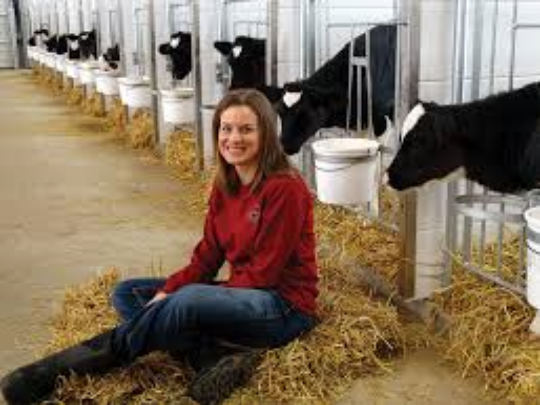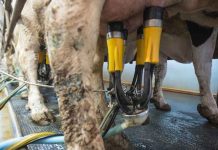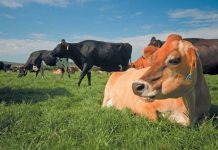“I wanted to be at the farm full time because it’s a passion. It’s a passion for caring for our land and animals, it’s a passion and an honor to be a third generation in a family business and it’s a passion to provide food for this country. It’s really about the love we have for what we do,” she said.
But it has never been easy, and many farmers are losing money no matter how many 16-hour days they put in milking cows, caring for livestock, planting and harvesting crops.
A sharp decline in the price farmers receive for their milk nationwide has forced hundreds of them out of business this year in Wisconsin alone.
“Times can get tough; there’s no doubt,” Brossard said.
“But I think there are ways we can weather the storm until markets turn around. We have drive and passion to keep pushing forward.”
Consumers are pulled in many directions when it comes to dairy products and their views on farming.
The U.S. Department of Agriculture recommends that adults get three cups of dairy a day, including options such as fat-free milk.
But milk’s wholesome image has been tarnished by diet trends and divergent attitudes about nutrition. Animal welfare groups such as People for the Ethical Treatment of Animals have criticized the dairy industry for mistreatment of cows.
By coming to the farmers market, Brossard and Roden said, they wanted to put a human face on agriculture and dispel some of the negative stereotypes.
“I love having people out to our farm. Then they realize that we’re people, too. We have families, we have struggles, we have pets, we have hobbies. It’s not just, “Oh my God, that’s one big farm,’ ” Brossard said.
They could have gone to a grocery store to have one-on-one conversations with consumers, but they chose the farmers market partly because it is easier to talk with people if they aren’t in a hurry.
“Consumers still want to know where their food comes from. They want to connect,” Brossard said.
It can be difficult for farmers to convey the message that they’re struggling financially even as food prices in the grocery store remain high.
“People don’t realize that the price they pay for something and what the farmer receives from it is drastically different,” Roden said.
Nationwide, net farm income has fallen more than 50 percent since 2013 and it’s expected to drop another 6.7 percent this year — to the lowest level since 2006, according to the U.S. Department of Agriculture.
For every dollar consumers spend on food, the farmer receives just 14.8 cents — the lowest “farm share” since the USDA began reporting the figures in 1993.
Sales of milk as a beverage have fallen to some of their lowest levels in decades. Changing consumer habits and more drink choices are to blame, according to the industry.
Previous marketing campaigns, such as the “Got Milk?” slogan and milk mustaches on celebrities, won advertising awards but did not reverse the sales decline.
Yet it’s not all bad, as sales of cheese, butter, yogurt and other dairy products have risen in recent years.
“We hope that many people drink milk, but we also hope they are consuming all of the other dairy products,” Roden said.
“As an industry, we are struggling with how to market to the consumer making purchasing decisions. One thing that’s helped has been pizza makers offering extra cheese and having the ‘Undeniably Dairy’ logo on the box,” she said.
The idea for Saturday’s farmers market visit came from the U.S. Farmers & Ranchers Alliance, a coalition of organizations that wants to spark conversations with consumers about how food is grown and raised.
When Brossard graduated from Beaver Dam High School in 2000, her parents included her as an owner of a limited liability corporation for the farm. But it’s really a family operation, she says, not a big faceless company.
“I hope the consumers of our dairy products know that, no matter what, we are producing safe, nutritious, milk, cheese, butter and everything else. That’s our message here,” she said.





